Windows and Doors Extraction from Point Cloud Data Combining Semantic Features and Material Characteristics
Abstract
1. Introduction
2. Materials and Methods
2.1. Study Site and Data
2.2. Methodology
2.2.1. Data Preprocessing (Step 1)
2.2.2. Segmentation Using Gradient Filtering and RANSAC Algorithm (Step 2)
2.2.3. Windows and Doors Extraction in the 2D Image with Improved Bounding Box Algorithm (Step 3)
Ameliorate the Boundary Condition of the Bounding Box Algorithm
Elimination of Nonstandard Shape
Region Union Method
Segmentation Method
Method for Window Detection
2.2.4. Identification of Windows and Doors and Their Opening Condition (Step 4)
- (1)
- If the bottom boundary of the opening is on the ground level, then the opening is supposed to be a door, and the reflectivity of the area needs to be verified.
- (2)
- If the bottom boundary of the opening does not fit the ground level, the material properties will be taken as the primary factor to define whether the detected area is a window, door, or wall. Timber material has reflectivity ranging from 0.2 to 0.35 [46]. White paint on the non-filed concrete has a reflectivity of about 0.6 [49]. Glass has a transmittance of over 0.95 [49]. The scalar field value in Cloudcompare software represents the reflectivity value proportionally. The object having a scalar field value larger than timber material and smaller than white-painted concrete will be regarded as a whiteboard. The overall value relationship will be , where stands for the scalar field value.
3. Results
3.1. Results of Gradient Filtering and RANSAC Algorithm
3.2. Results of Windows and Doors Detection on 2D Image
3.2.1. Ameliorate Boundary Condition and Adopt Nonstandard Shape Elimination and Region Union Method
3.2.2. Adopt Segmentation Method and Elimination of High Aspect Ratio Openings
3.2.3. Adopt Specific Method for Windows Detection
3.3. Results of Windows and Doors Differentiation and Opening Condition on 3D Point Cloud Data
3.3.1. Windows and Doors Detection Result on 3D Point Cloud of Each Plane
3.3.2. Final Result Shown in MATLAB Window
4. Conclusions
Author Contributions
Funding
Institutional Review Board Statement
Informed Consent Statement
Data Availability Statement
Conflicts of Interest
References
- Guo, S.; Xiong, H.J.; Zheng, X.W. A Novel Semantic Matching Method for Indoor Trajectory Tracking. ISPRS Int. Geo-Inf. 2017, 6, 17. [Google Scholar] [CrossRef]
- Liu, M.Y.; Chen, R.Z.; Li, D.R.; Chen, Y.J.; Guo, G.Y.; Cao, Z.P.; Pan, Y.J. Scene Recognition for Indoor Localization Using a Multi-Sensor Fusion Approach. Sensors 2017, 17, 20. [Google Scholar] [CrossRef]
- Nikoohemat, S.; Diakite, A.A.; Zlatanova, S.; Vosselman, G. Indoor 3D reconstruction from point clouds for optimal routing in complex buildings to support disaster management. Autom. Constr. 2020, 113, 17. [Google Scholar] [CrossRef]
- Ma, G.F.; Wu, Z.J. BIM-based building fire emergency management: Combining building users’ behavior decisions. Autom. Constr. 2020, 109, 16. [Google Scholar] [CrossRef]
- Wang, R.S.; Xie, L.; Chen, D. Modeling Indoor Spaces Using Decomposition and Reconstruction of Structural Elements. Photogramm. Eng. Remote Sens. 2017, 83, 827–841. [Google Scholar] [CrossRef]
- Heaton, J.; Parlikad, A.K.; Schooling, J. Design and development of BIM models to support operations and maintenance. Comput. Ind. 2019, 111, 172–186. [Google Scholar] [CrossRef]
- Portales, C.; Lerma, J.L.; Navarro, S. Augmented reality and photogrammetry: A synergy to visualize physical and virtual city environments. Isprs J. Photogramm. Remote Sens. 2010, 65, 134–142. [Google Scholar] [CrossRef]
- Jung, J.; Stachniss, C.; Ju, S.; Heo, J. Automated 3D volumetric reconstruction of multiple-room building interiors for as-built BIM. Adv. Eng. Inform. 2018, 38, 811–825. [Google Scholar] [CrossRef]
- Iman Zolanvari, S.M.; Laefer, D.F. Slicing Method for curved façade and window extraction from point clouds. ISPRS J. Photogramm. Remote Sens. 2016, 119, 334–346. [Google Scholar] [CrossRef]
- Resop, J.; Hession, W. Terrestrial Laser Scanning for Monitoring Streambank Retreat: Comparison with Traditional Surveying Techniques. J. Hydraul. Eng. 2010, 136, 794–798. [Google Scholar] [CrossRef]
- Fan, L.; Powrie, W.; Smethurst, J.; Atkinson, P.M.; Einstein, H. The effect of short ground vegetation on terrestrial laser scans at a local scale. Isprs J. Photogramm. Remote Sens. 2014, 95, 42–52. [Google Scholar] [CrossRef]
- Abayowa, B.O.; Yilmaz, A.; Hardie, R.C. Automatic registration of optical aerial imagery to a LiDAR point cloud for generation of city models. Isprs J. Photogramm. Remote Sens. 2015, 106, 68–81. [Google Scholar] [CrossRef]
- Park, M.K.; Lee, S.J.; Lee, K.H. Multi-scale tensor voting for feature extraction from unstructured point clouds. Graph. Model. 2012, 74, 197–208. [Google Scholar] [CrossRef]
- Ma, Y.; Wei, Z.; Wang, Y. Point Cloud Feature Extraction Based Integrated Positioning Method for Unmanned Vehicle. Appl. Mech. Mater. 2014, 590, 463–469. [Google Scholar] [CrossRef]
- Cheng, B.; Fu, H.; Li, T.; Zhang, H.; Huang, J.; Peng, Y.; Chen, H.; Fan, C. Evolutionary computation-based multitask learning network for railway passenger comfort evaluation from EEG signals. Appl. Soft Comput. 2023, 110079. [Google Scholar] [CrossRef]
- Cheng, B.; Chang, R.; Yin, Q.; Li, J.; Huang, J.; Chen, H. A PSR-AHP-GE model for evaluating environmental impacts of spoil disposal areas in high-speed railway engineering. J. Clean. Prod. 2023, 388, 135970. [Google Scholar] [CrossRef]
- Fu, H.; Niu, J.; Wu, Z.; Cheng, B.; Guo, X.; Zuo, J. Exploration of public stereotypes of supply-and-demand characteristics of recycled water infrastructure - Evidence from an event-related potential experiment in Xi’an, China. J. Environ. Manag. 2022, 322, 116103. [Google Scholar] [CrossRef]
- Schnabel, R.; Wahl, R.; Klein, R. Efficient RANSAC for point-cloud shape detection. Comput. Graph. Forum 2007, 26, 214–226. [Google Scholar] [CrossRef]
- Awwad, T.M.; Zhu, Q.; Du, Z.Q.; Zhang, Y.T. An improved segmentation approach for planar surfaces from unstructured 3D point clouds. Photogramm. Rec. 2010, 25, 5–23. [Google Scholar] [CrossRef]
- Fischler, M.A.; Bolles, R.C. Random Sample Consensus—A Paradigm For Model-Fitting With Applications to Image-Analysis and Automated Cartography. Commun. ACM 1981, 24, 381–395. [Google Scholar] [CrossRef]
- Boulaassal, H.; Landes, T.; Grussenmeyer, P. Automatic Extraction of Planar Clusters and Their Contours on Building Façades Recorded by Terrestrial Laser Scanner. Int. J. Arch. Comput. 2009, 7, 1–20. [Google Scholar] [CrossRef]
- Wang, M.; Tseng, Y.-H. LIDAR data segmentation and classification based on octree structure. parameters 2004. [Google Scholar]
- Lari, Z.; Habib, A. An adaptive approach for the segmentation and extraction of planar and linear/cylindrical features from laser scanning data. Isprs J. Photogramm. Remote Sens. 2014, 93, 192–212. [Google Scholar] [CrossRef]
- Mahmoudabadi, H.; Olsen, M.J.; Todorovic, S. Efficient terrestrial laser scan segmentation exploiting data structure. ISPRS J. Photogramm. Remote Sens. 2016, 119, 135–150. [Google Scholar] [CrossRef]
- Che, E.; Olsen, M.J. Multi-scan segmentation of terrestrial laser scanning data based on normal variation analysis. ISPRS J. Photogramm. Remote Sens. 2018, 143, 233–248. [Google Scholar] [CrossRef]
- Luo, H.; Khoshelham, K.; Fang, L.; Chen, C. Unsupervised scene adaptation for semantic segmentation of urban mobile laser scanning point clouds. ISPRS J. Photogramm. Remote Sens. 2020, 169, 253–267. [Google Scholar] [CrossRef]
- Chen, J.; Kira, Z.; Cho, Y.K. LRGNet: Learnable Region Growing for Class-Agnostic Point Cloud Segmentation. IEEE Robot. Autom. Lett. 2021, 6, 2799–2806. [Google Scholar] [CrossRef]
- Zhang, C.; Fan, H. An Improved Multi-Task Pointwise Network for Segmentation of Building Roofs in Airborne Laser Scanning Point Clouds. Photogramm. Rec. 2022, 37, 260–284. [Google Scholar] [CrossRef]
- Bendels, G.H.; Schnabel, R.; Klein, R. Detecting Holes in Point Set Surfaces. In Proceedings of the 14th International Conference in Central Europe on Computer Graphics, Visualization and Computer Vision, Univ W Bohemia, Campus Bory, Plzen Bory, Czech Republic, 30 January–3 February 2006; pp. 89–96. [Google Scholar]
- Pu, S.; Vosselman, G. Automatic extraction of building features from terrestrial laser scanning. Int. Arch. Photogramm. Remote Sens. Spat. Inf. Sci. 2012, 36. [Google Scholar]
- Linh, T.H.; Laefer, D.F.; Hinks, T.; Carr, H. Flying Voxel Method with Delaunay Triangulation Criterion for Facade/Feature Detection for Computation. J. Comput. Civil. Eng. 2012, 26, 691–707. [Google Scholar] [CrossRef]
- Truong-Hong, L.; Laefer, D.F.; Hinks, T.; Carr, H. Combining an Angle Criterion with Voxelization and the Flying Voxel Method in Reconstructing Building Models from LiDAR Data. Comput. Aided Civ. Infrastruct. Eng. 2013, 28, 112–129. [Google Scholar] [CrossRef]
- Linh, T.H.; Laefer, D.F. Octree-based, automatic building facade generation from LiDAR data. Comput. Aided Des. 2014, 53, 46–61. [Google Scholar] [CrossRef]
- Ni, H.; Lin, X.; Ning, X.; Zhang, J. Edge Detection and Feature Line Tracing in 3D-Point Clouds by Analyzing Geometric Properties of Neighborhoods. Remote Sens. 2016, 8, 710. [Google Scholar] [CrossRef]
- Li, Z.; Zhang, L.; Mathiopoulos, P.T.; Liu, F.; Zhang, L.; Li, S.; Liu, H. A hierarchical methodology for urban facade parsing from TLS point clouds. ISPRS J. Photogramm. Remote Sens. 2017, 123, 75–93. [Google Scholar] [CrossRef]
- Shi, S.; Wang, X.; Li, H. PointRCNN: 3D Object Proposal Generation and Detection From Point Cloud. In Proceedings of the 2019 IEEE/CVF Conference on Computer Vision and Pattern Recognition (CVPR), Long Beach, CA, USA, 15–20 June 2019; pp. 770–779. [Google Scholar]
- Shao, J.; Zhang, W.; Shen, A.; Mellado, N.; Cai, S.; Luo, L.; Wang, N.; Yan, G.; Zhou, G. Seed point set-based building roof extraction from airborne LiDAR point clouds using a top-down strategy. Autom. Constr. 2021, 126, 103660. [Google Scholar] [CrossRef]
- Otepka, J.; Ghuffar, S.; Waldhauser, C.; Hochreiter, R.; Pfeifer, N. Georeferenced Point Clouds: A Survey of Features and Point Cloud Management. ISPRS Int. Geo-Inf. 2013, 2, 1038–1065. [Google Scholar] [CrossRef]
- Previtali, M.; Barazzetti, L.; Brumana, R.; Cuca, B.; Oreni, D.; Roncoroni, F.; Scaioni, M. Automatic façade modelling using point cloud data for energy-efficient retrofitting. Appl. Geomat. 2014, 6, 95–113. [Google Scholar] [CrossRef]
- Malihi, S.; Zoej, M.J.V.; Hahn, M.; Mokhtarzade, M. Window Detection from UAS-Derived Photogrammetric Point Cloud Employing Density-Based Filtering and Perceptual Organization. Remote Sens. 2018, 10, 22. [Google Scholar] [CrossRef]
- Previtali, M.; Díaz Vilariño, L.; Scaioni, M. Towards Automatic Reconstruction of Indoor Scenes from Incomplete Point Clouds: Door and Window Detection and Regularization. ISPRS Int. Arch. Photogramm. Remote Sens. Spat. Inf. Sci. 2018, XLII-4, 507–514. [Google Scholar] [CrossRef]
- Jarzabek-Rychard, M.; Lin, D.; Maas, H.G. Supervised Detection of Facade Openings in 3D Point Clouds with Thermal Attributes. Remote Sens. 2020, 12, 17. [Google Scholar] [CrossRef]
- Zhao, M.N.; Hua, X.H.; Feng, S.Q.; Zhao, B.F. Information Extraction of Buildings, Doors, and Windows Based on Point Cloud Slices. Chin. J. Lasers 2020, 47, 10. [Google Scholar] [CrossRef]
- Cai, Y.Z.; Fan, L. An Efficient Approach to Automatic Construction of 3D Watertight Geometry of Buildings Using Point Clouds. Remote Sens. 2021, 13, 18. [Google Scholar] [CrossRef]
- Fukunaga, K.; Hostetler, L. The estimation of the gradient of a density function, with applications in pattern recognition. IEEE Trans. Inf. Theory 1975, 21, 32–40. [Google Scholar] [CrossRef]
- CloudCompare v2.6.1–User Manual. Available online: http://www.cloudcompare.org/doc/qCC/CloudCompare%20v2.6.1%20-%20User%20manual.pdf (accessed on 2 January 2023).
- Coughlan, J.; Yuille, A. In Proceedings of the Manhattan World: Compass Direction from a Single Image by Bayesian Inference, Kerkyra, Greece, 20–27 September 1999.
- Torr, P.H.S.; Zisserman, A. MLESAC: A New Robust Estimator with Application to Estimating Image Geometry. Comput. Vis. Image Underst. 2000, 78, 138–156. [Google Scholar] [CrossRef]
- Approximate Reflectance Values of Typical Building Finishes. 2018. Available online: https://decrolux.com.au/learning-centre/2018/approximate-reflectance-values-of-typical-building-finishes (accessed on 2 January 2023).
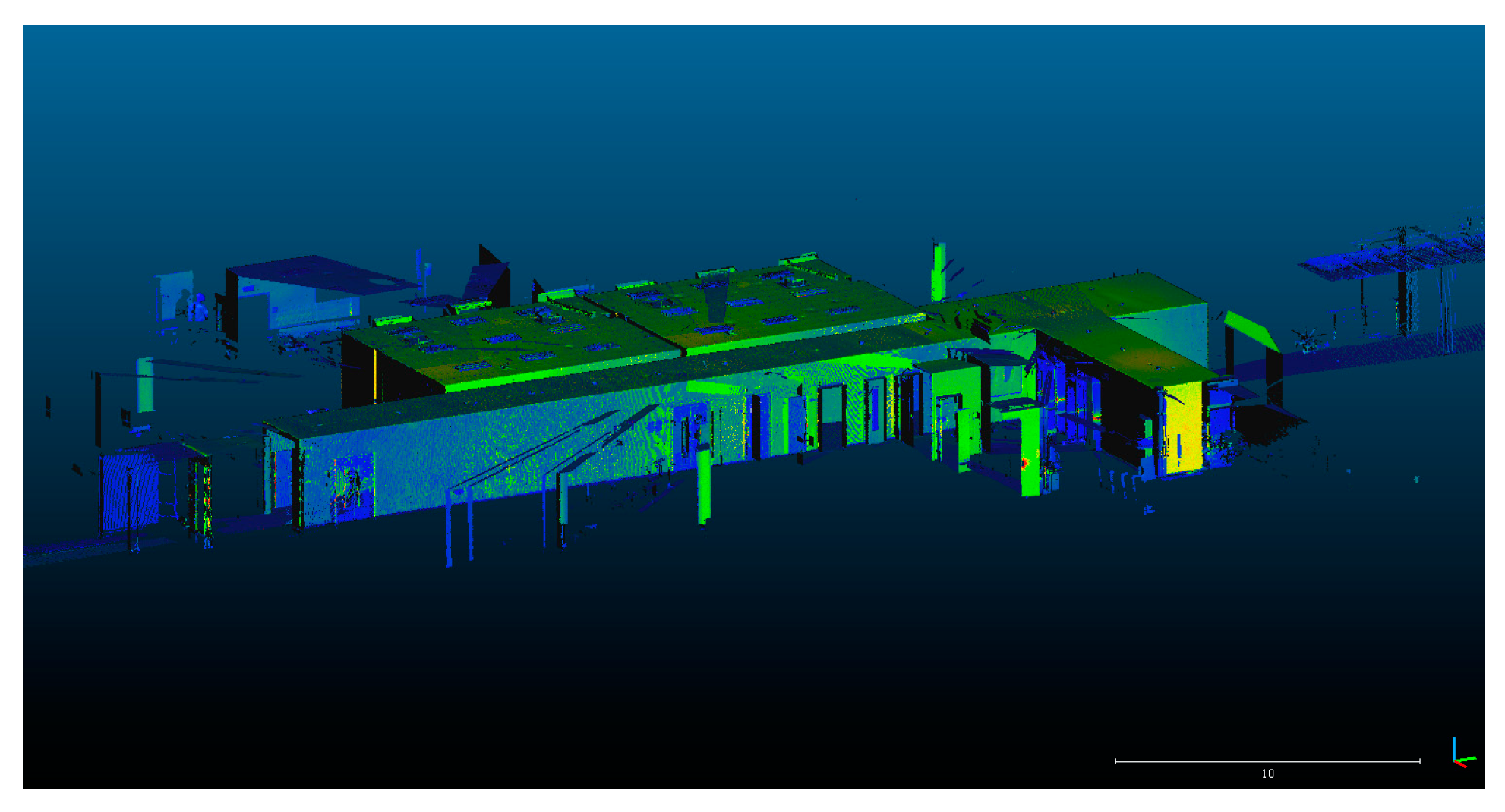

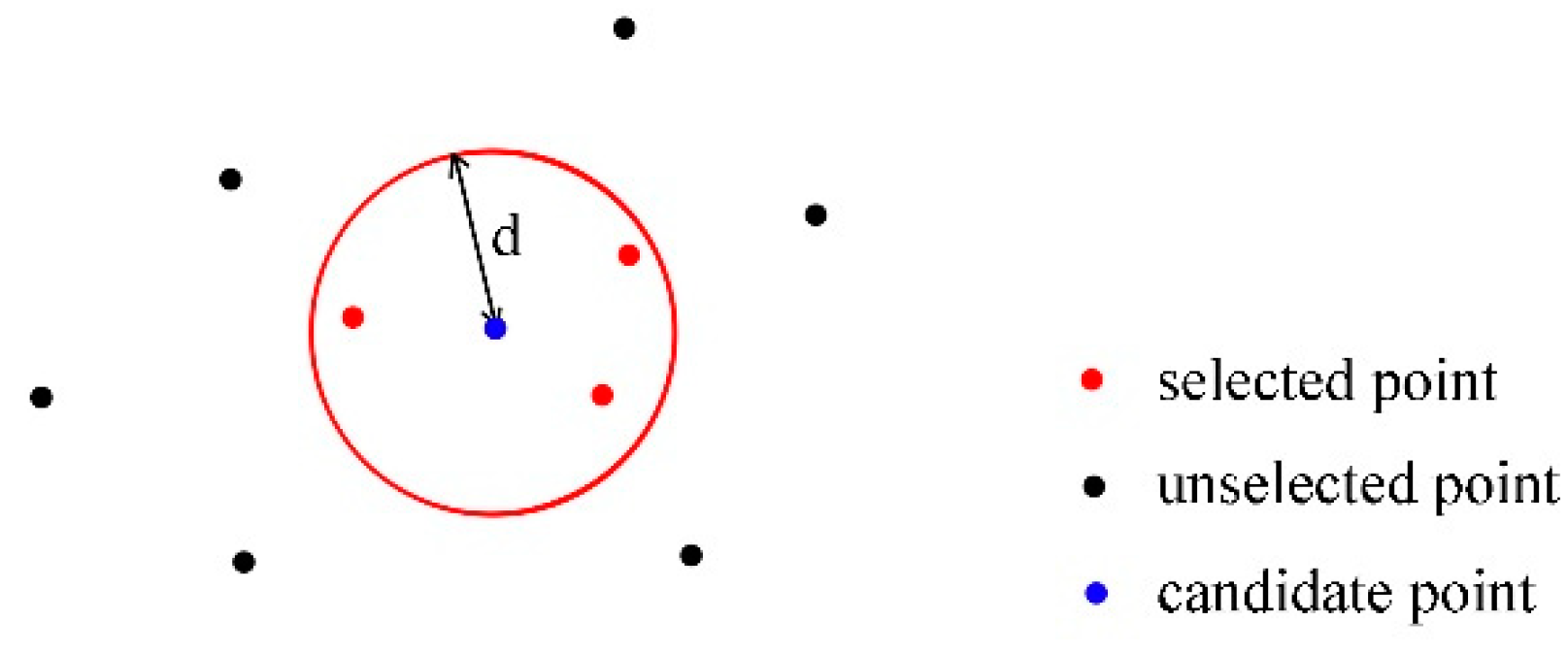
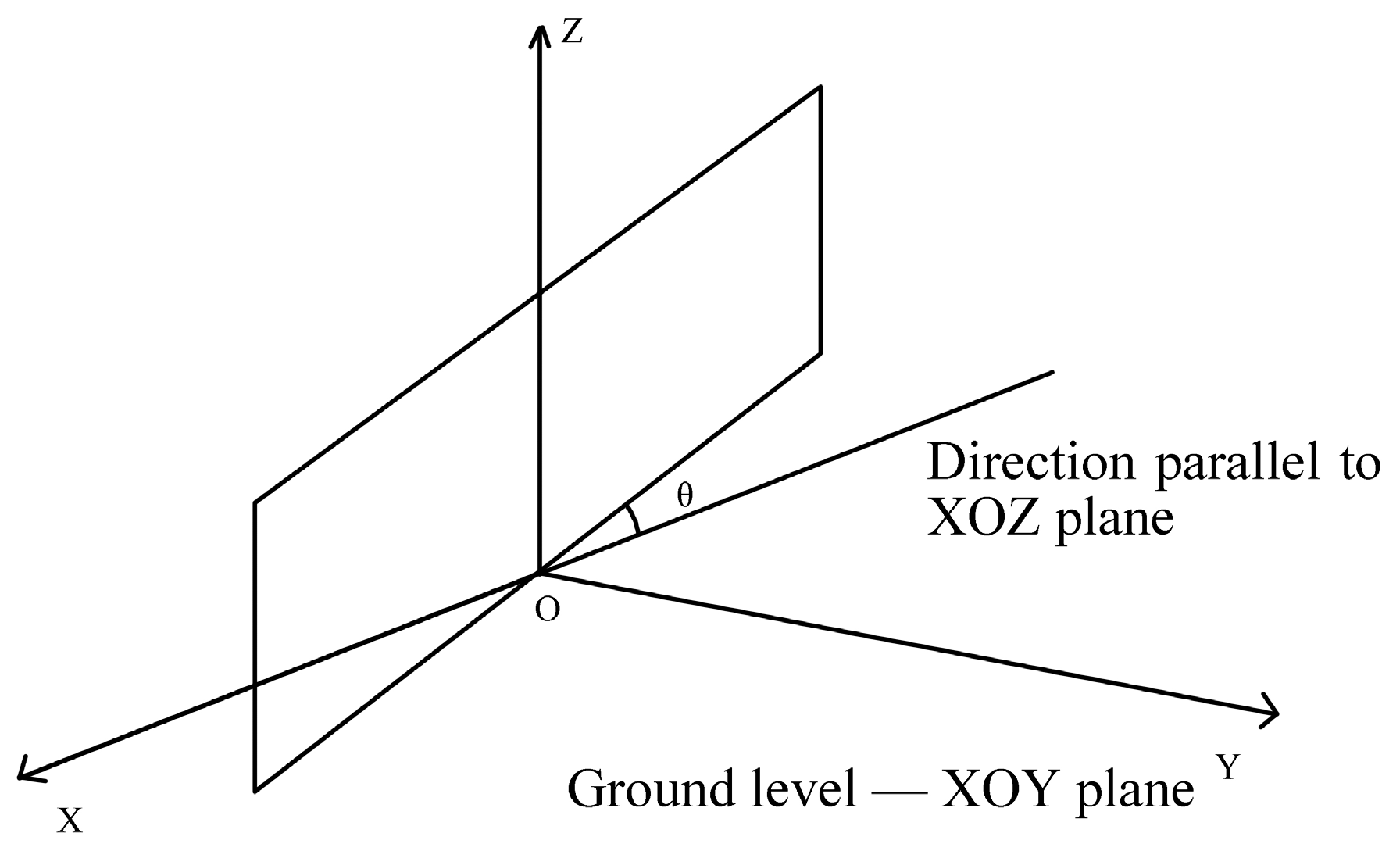
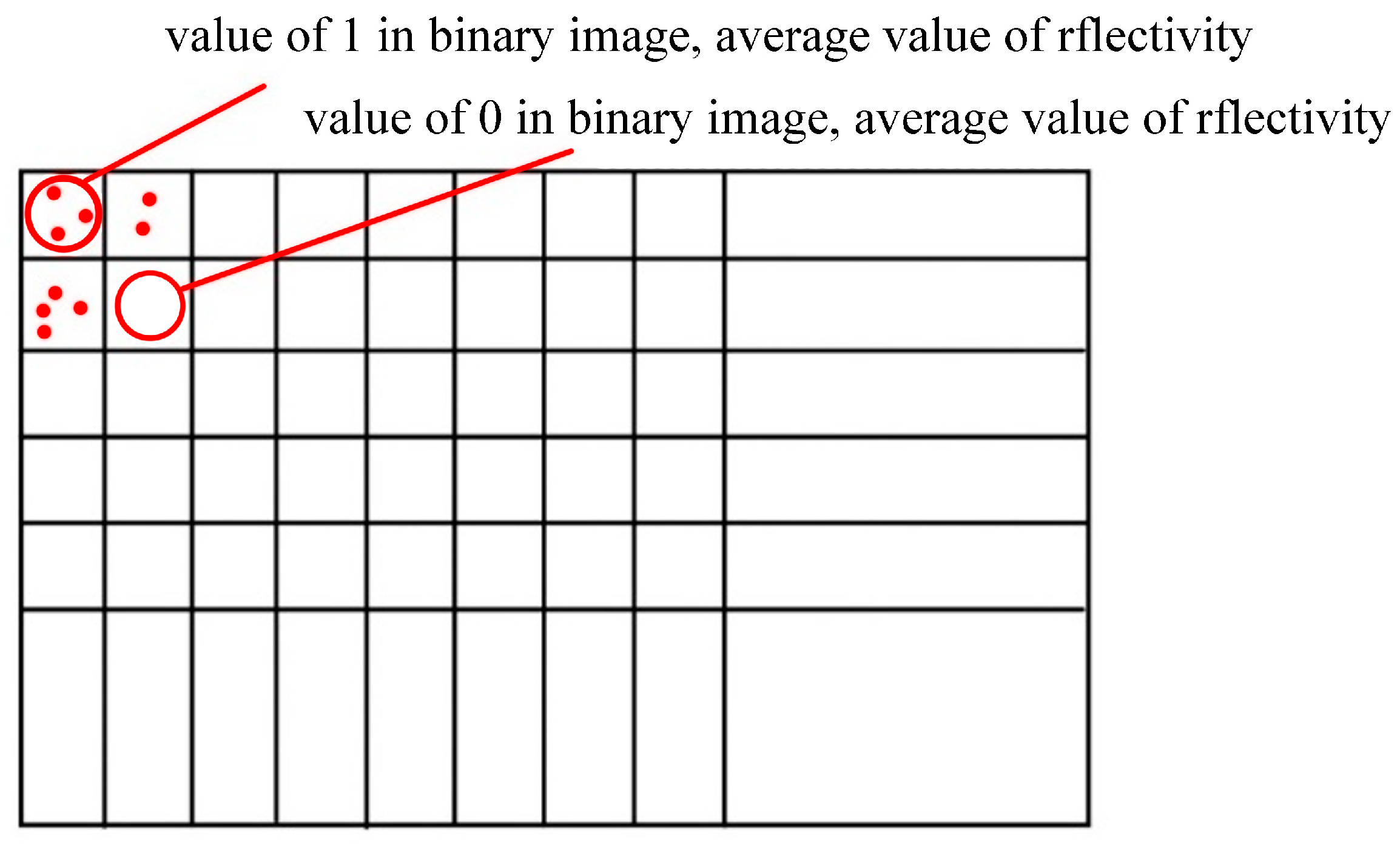
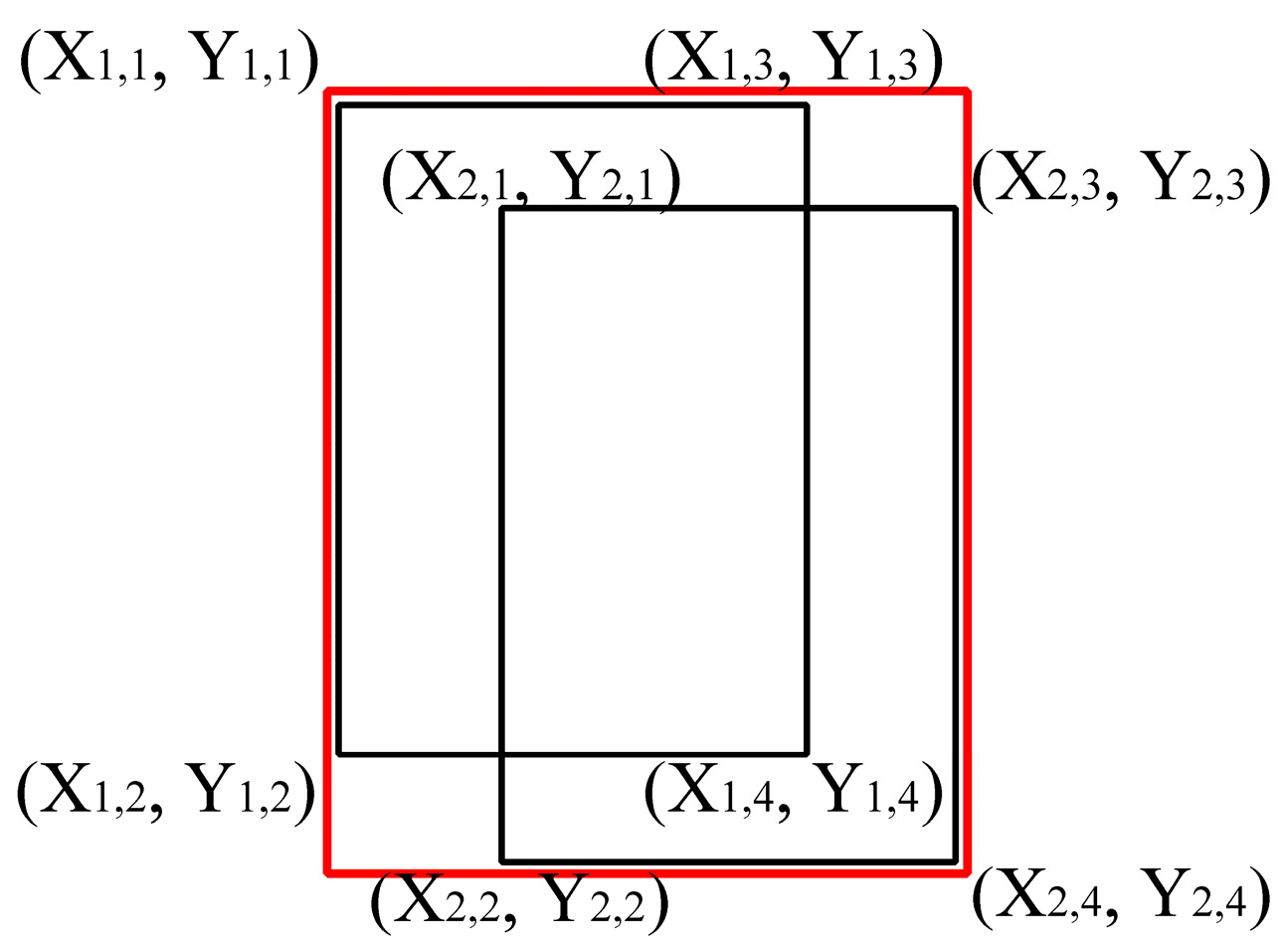

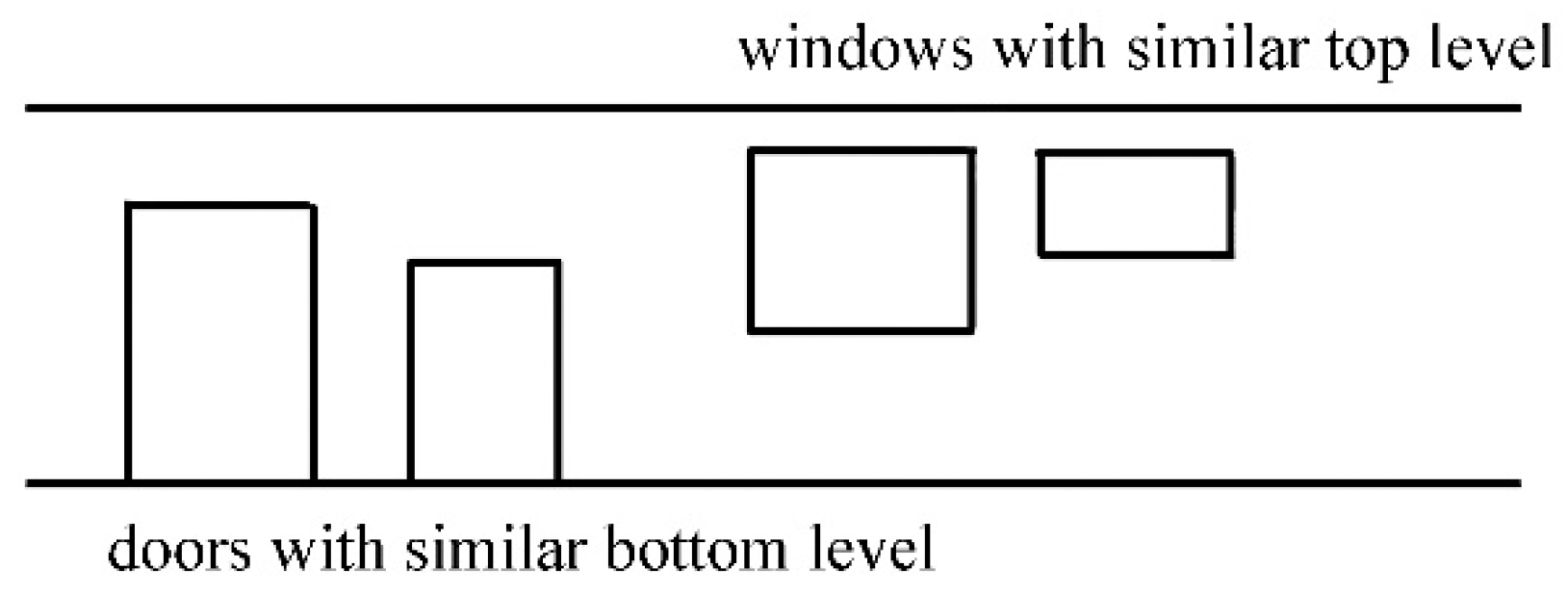

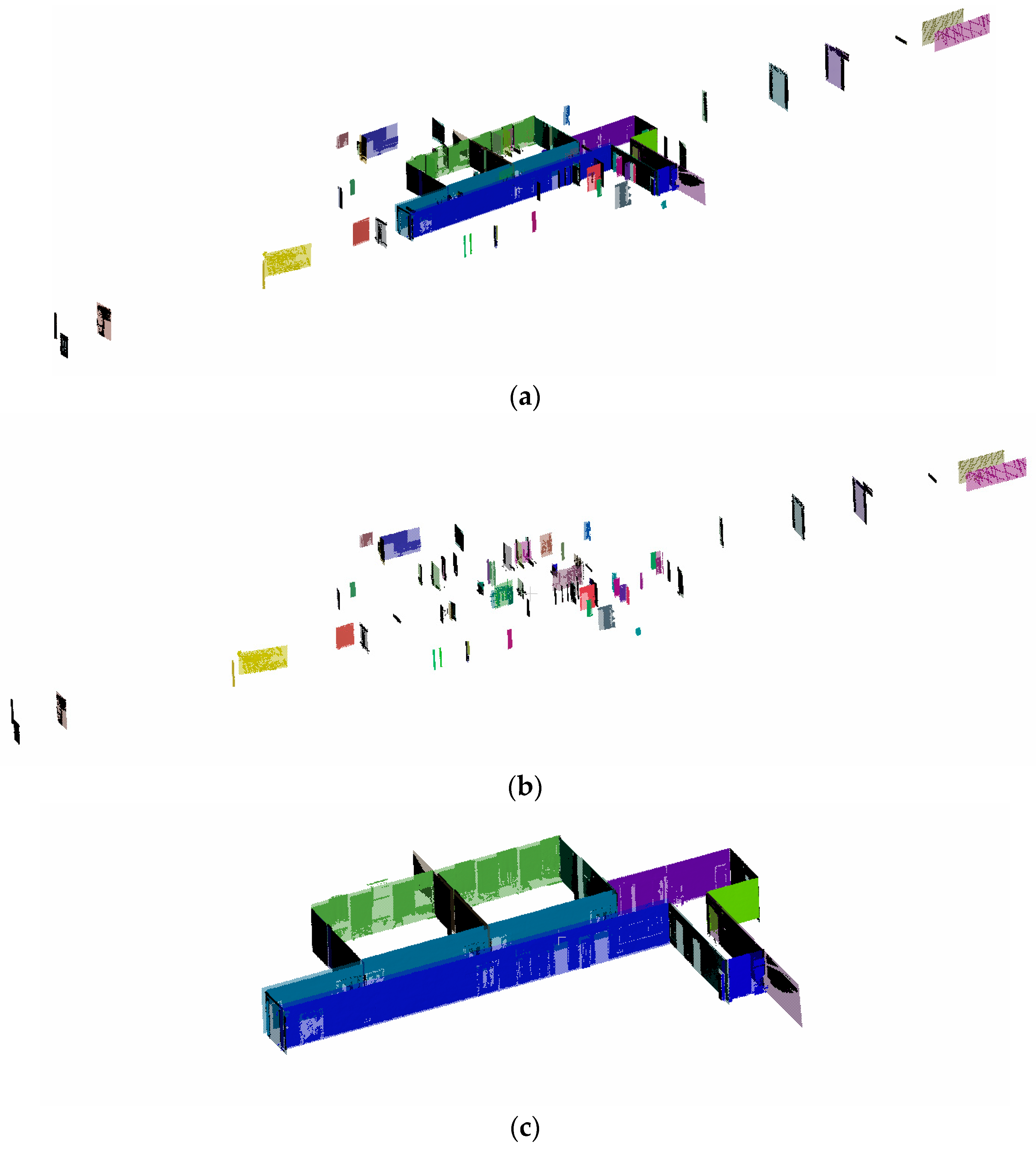
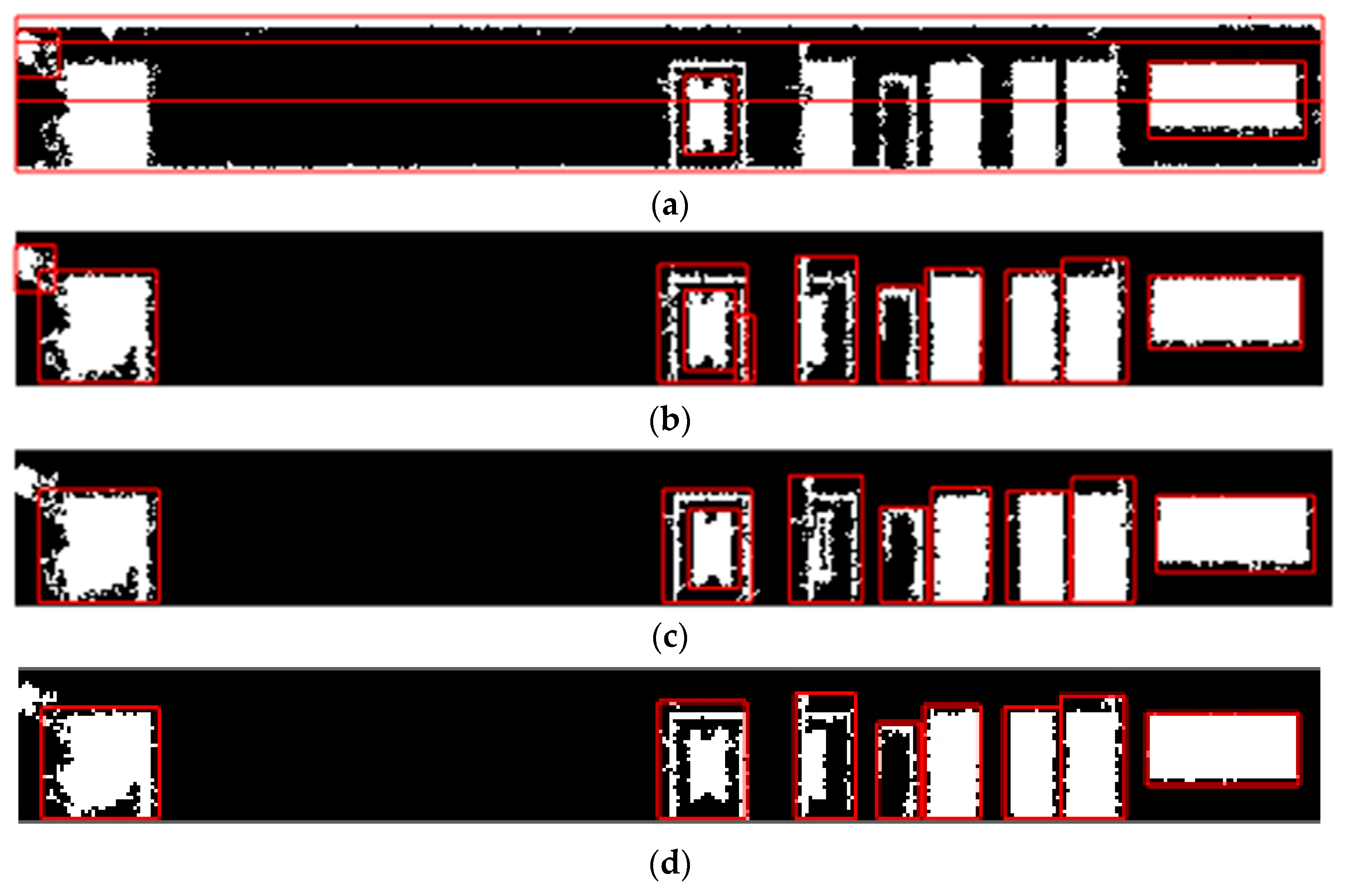

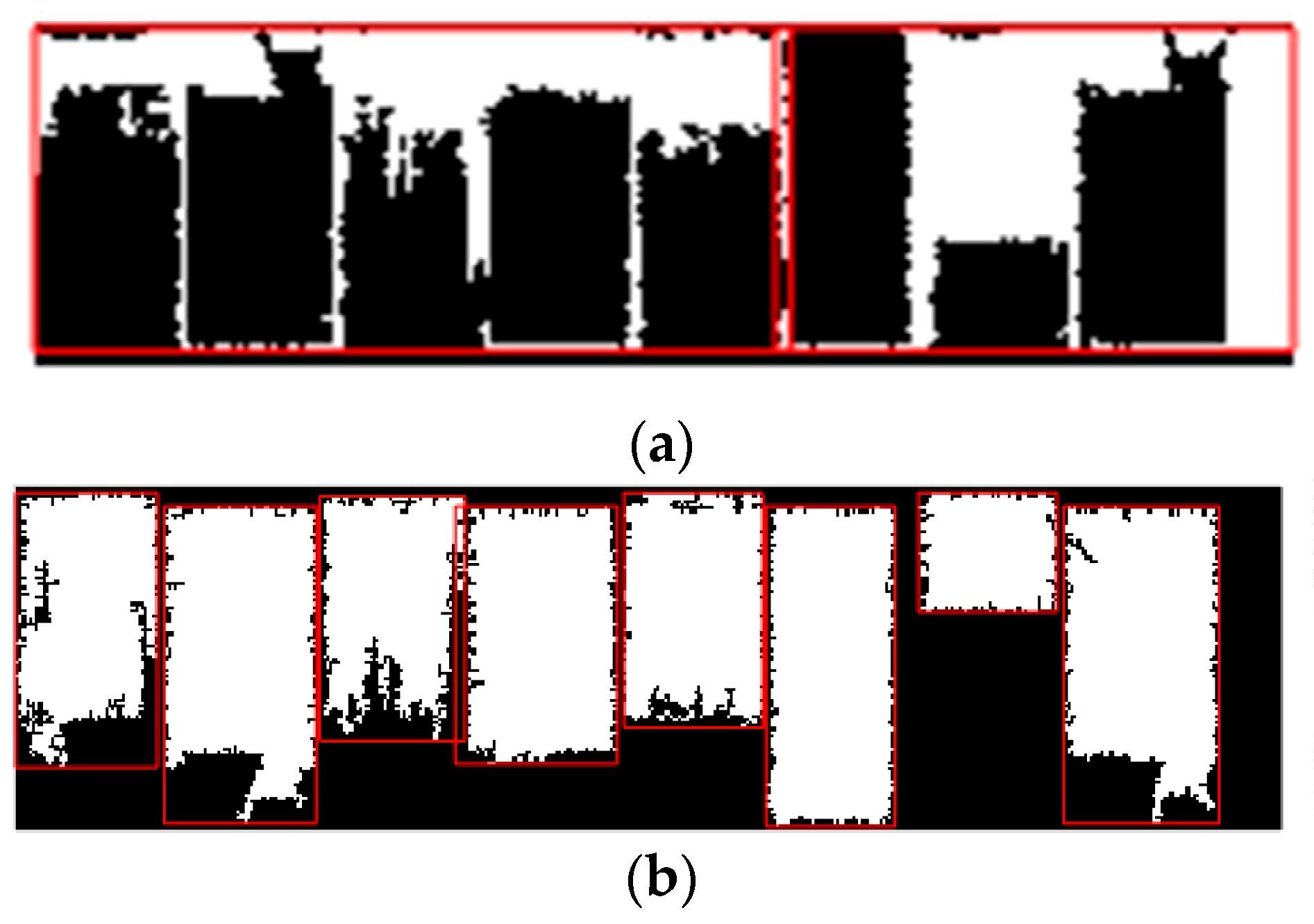



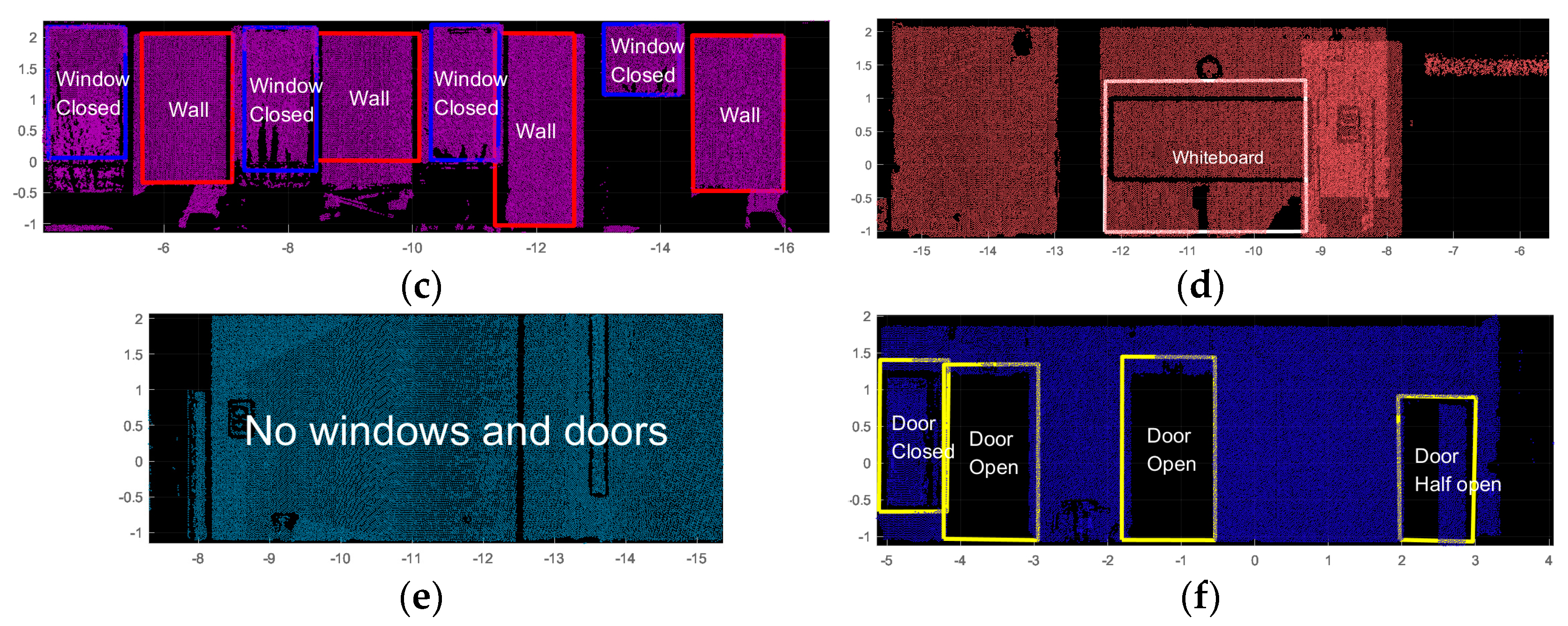
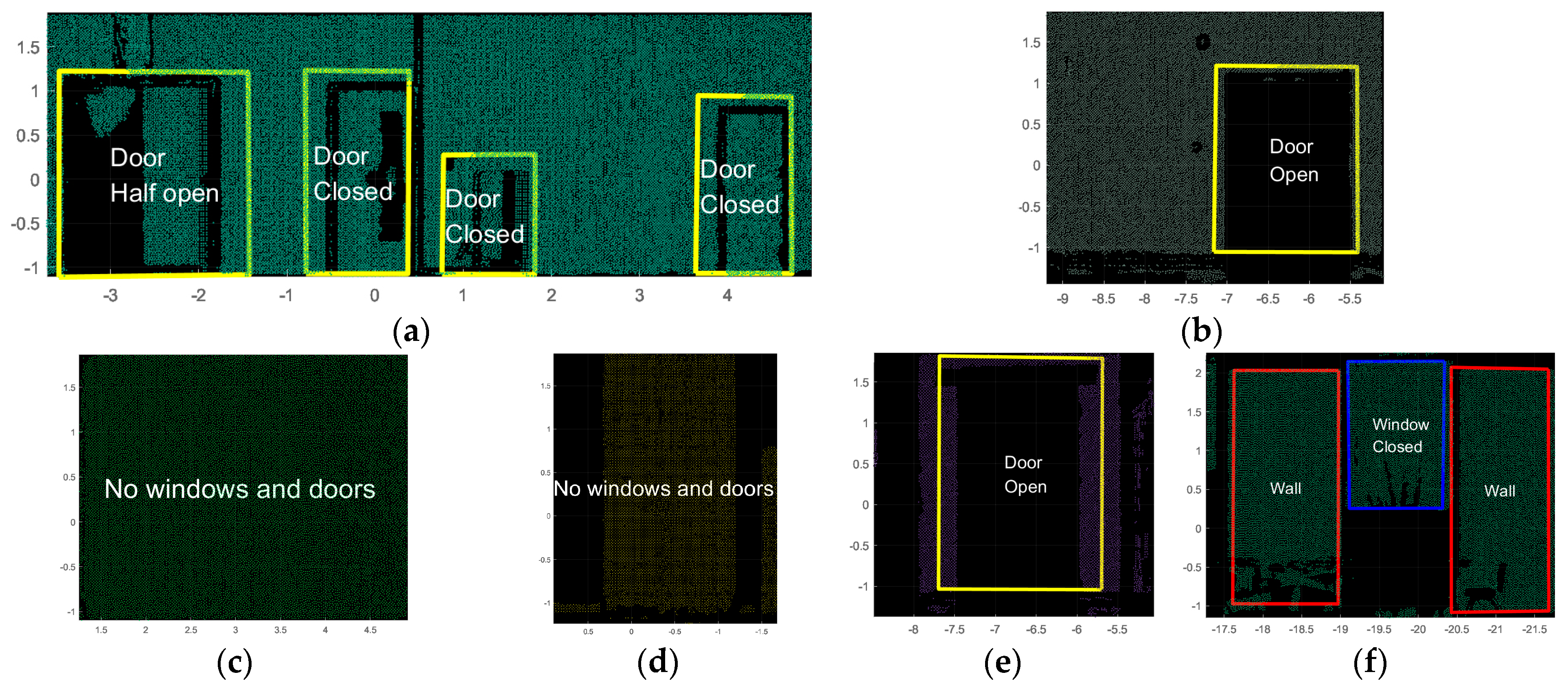
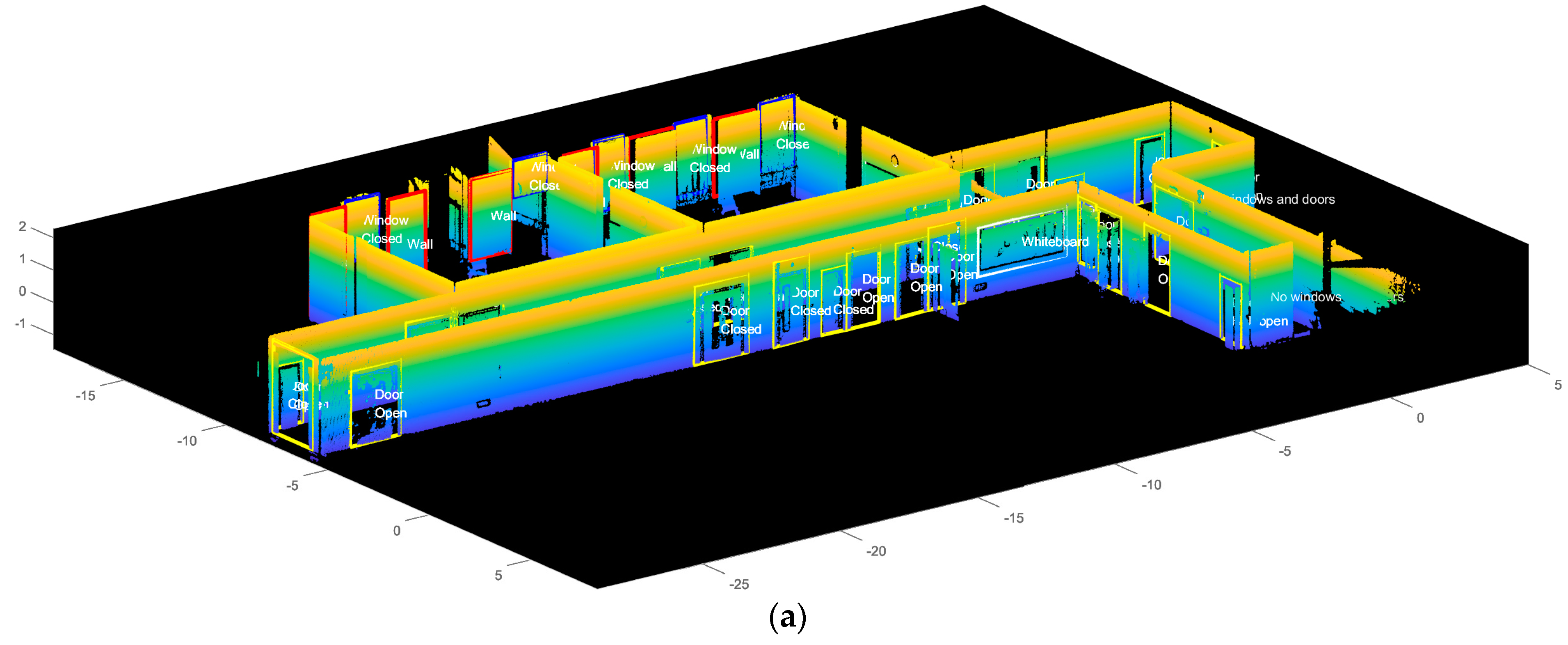
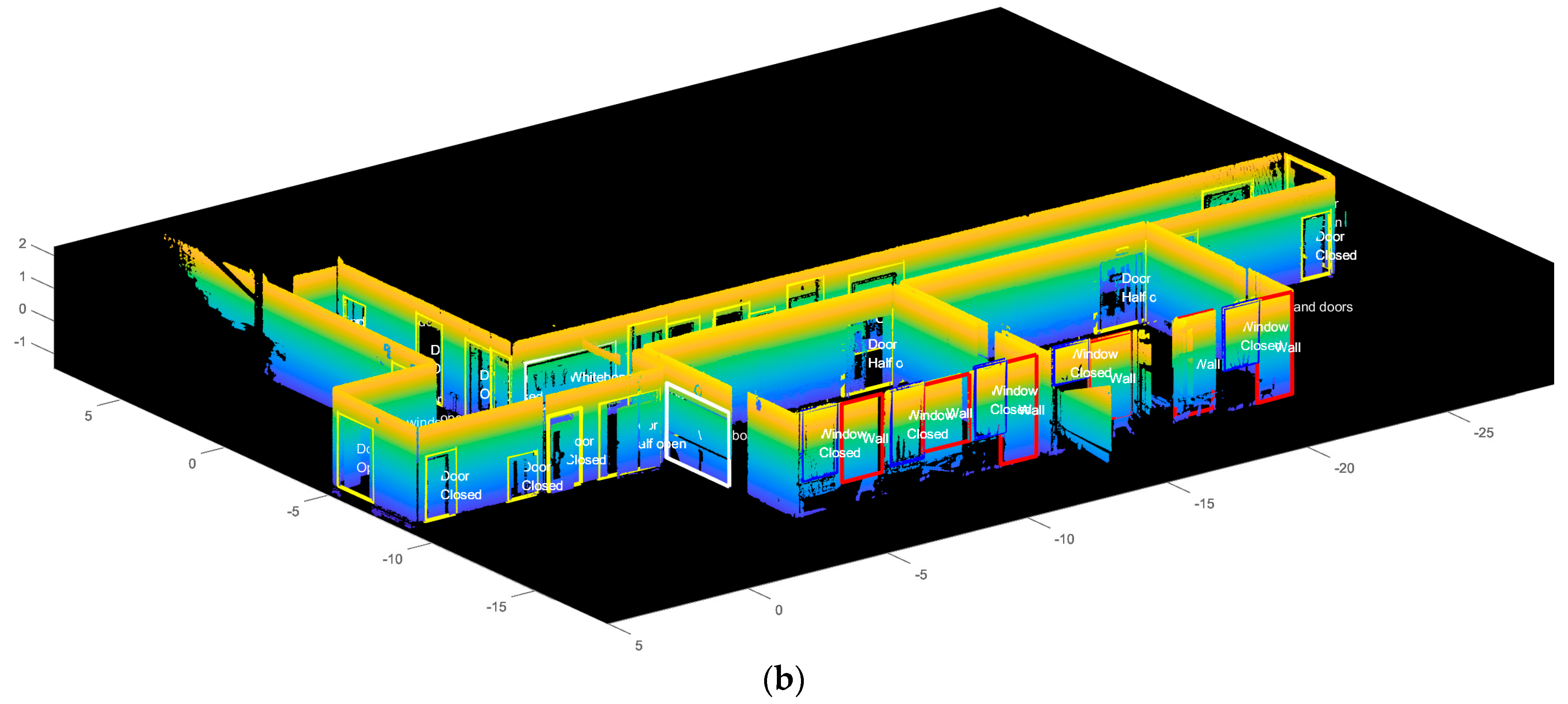
| Plane 1 | Plane 2 | Plane 3 | Plane 4 | |
|---|---|---|---|---|
| Completeness | 8/8 (7 doors and 1 whiteboard) | 6/6 (6 doors) | 1/1 (1 door) | 0/0 (no opening) |
| Plane 5 | Plane 6 | Plane 7 | Plane 8 | |
| Completeness | 4/4 (4 windows) | 1/1 (1 whiteboard) | 0/0 (no opening) | 4/4 (4 doors) |
| Plane 9 | Plane 10 | Plane 11 | Plane 12 | |
| Completeness | 4/4 (4 doors) | 1/1 (1 door) | 0/0 (no opening) | 0/0 (no opening) |
| Plane 13 | Plane 27 | |||
| Completeness | 1/1 (one door) | 1/1 (one window) |
| Plane 1 | Plane 2 | Plane 3 | Plane 4 | |
|---|---|---|---|---|
| Correctness | 8/7 | 6/5 | 1/1 | 0/0 |
| Plane 5 | Plane 6 | Plane 7 | Plane 8 | |
| Correctness | 4/4 | 1/0 | 0/0 | 4/4 |
| Plane 9 | Plane 10 | Plane 11 | Plane 12 | |
| Correctness | 4/4 | 1/1 | 0/0 | 0/0 |
| Plane 13 | Plane 27 | |||
| Correctness | 1/1 | 1/1 |
Disclaimer/Publisher’s Note: The statements, opinions and data contained in all publications are solely those of the individual author(s) and contributor(s) and not of MDPI and/or the editor(s). MDPI and/or the editor(s) disclaim responsibility for any injury to people or property resulting from any ideas, methods, instructions or products referred to in the content. |
© 2023 by the authors. Licensee MDPI, Basel, Switzerland. This article is an open access article distributed under the terms and conditions of the Creative Commons Attribution (CC BY) license (https://creativecommons.org/licenses/by/4.0/).
Share and Cite
Cheng, B.; Chen, S.; Fan, L.; Li, Y.; Cai, Y.; Liu, Z. Windows and Doors Extraction from Point Cloud Data Combining Semantic Features and Material Characteristics. Buildings 2023, 13, 507. https://doi.org/10.3390/buildings13020507
Cheng B, Chen S, Fan L, Li Y, Cai Y, Liu Z. Windows and Doors Extraction from Point Cloud Data Combining Semantic Features and Material Characteristics. Buildings. 2023; 13(2):507. https://doi.org/10.3390/buildings13020507
Chicago/Turabian StyleCheng, Baoquan, Shuhang Chen, Lei Fan, Yange Li, Yuanzhi Cai, and Zeru Liu. 2023. "Windows and Doors Extraction from Point Cloud Data Combining Semantic Features and Material Characteristics" Buildings 13, no. 2: 507. https://doi.org/10.3390/buildings13020507
APA StyleCheng, B., Chen, S., Fan, L., Li, Y., Cai, Y., & Liu, Z. (2023). Windows and Doors Extraction from Point Cloud Data Combining Semantic Features and Material Characteristics. Buildings, 13(2), 507. https://doi.org/10.3390/buildings13020507









